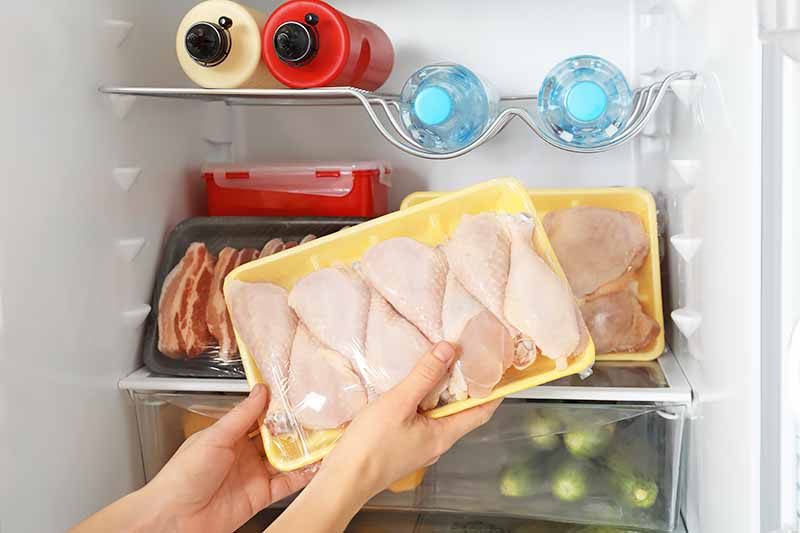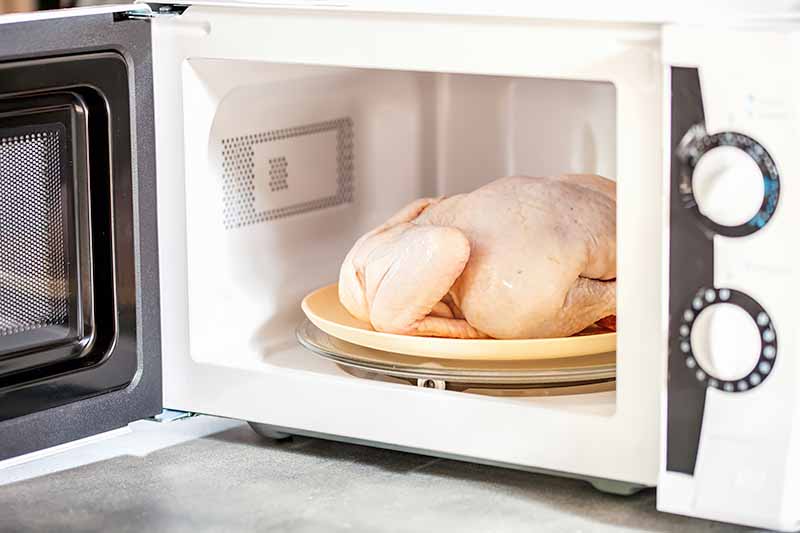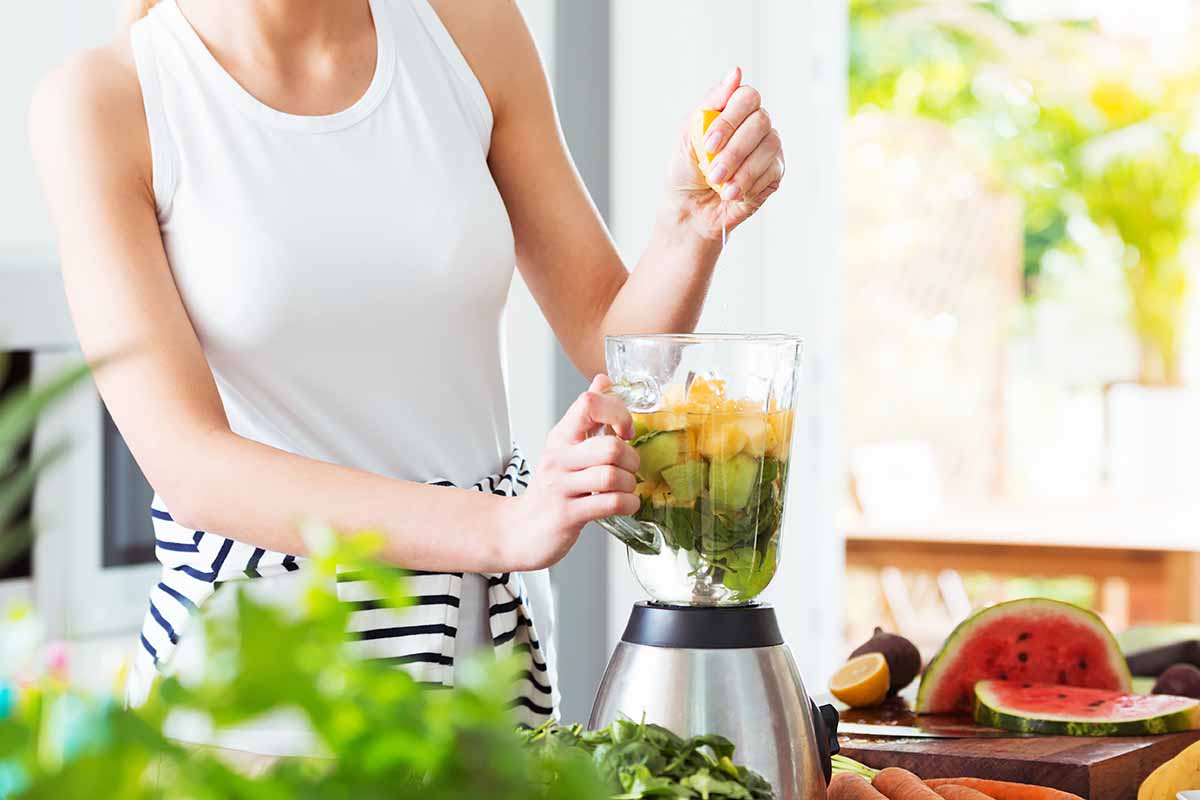We’ve all experienced the usual panic of not knowing what to cook for dinner as the late afternoon creeps toward nightfall. But what about that alarm that goes off in your brain when you have a brilliant cooking plan, and then suddenly remember that your chicken is still basically a block of ice?

Don’t worry. It’s happened to all of us.
There’s no need to veer away from whatever delicious poultry recipe you’ve been dreaming about. We’ve got your back. It’s time to learn the best ways to defrost poultry.
Whether you still have a little time to let your chicken chill out at its own pace, or you need to nuke that turkey breast ASAP before losing all motivation to cook, there are multiple ways to revive your poultry so it’s no longer a frozen mass of meat.
In this guide, we’ll lay out the best methods for taking your poultry from rock solid to ready-to-cook – and there are three of these, so you have options. We’ll even spill some secrets like when it’s okay to bypass thawing, and outline the what-not-to-do’s when it comes to defrosting chicken and other types of poultry as well.
Here are the approaches we’ll cover up ahead:
3 Methods to Defrost Poultry
Before we get to it, let’s quickly discuss what the term defrost actually means here.
Ice crystals form in frozen food, and then melt back into water when it’s thawed. As far as poultry goes, if you’re in the process of defrosting it and the inside still contains ice crystals, it’s not fully thawed yet.
Looks can be misleading. If your bird no longer looks quite so frigid on the outside, while there’s a much more frigid story to tell beneath the skin or closer to the bone, you need to know before you proceed with your recipe. Check the poultry for internal ice crystals with a skewer or paring knife.
You could also use your hand, but be sure to wash up afterwards to avoid spreading any salmonella that’s lurking on the meat all over your kitchen.
For whole poultry, the joints of thawed-out chicken and other birds will also be flexible. Just give a thigh or wing a wiggle to see if it’s ready.
Refrigerator Thawing
Let’s start with the process that requires the most advance planning.

Though it takes the longest amount of prep time, thawing poultry in the fridge is actually the most highly recommended route to take.
Why’s that, you ask? For starters, there’s no possibility of punching the wrong buttons on the microwave or leaving your Cornish game hen floating unattended in the sink for longer than you meant to.
Not to knock the other two methods described below. But it’s important to note that this course of action in particular is fairly foolproof. Just make sure you note the time when you transfer the meat from the freezer to the fridge.
Big birds like your Thanksgiving turkey – not the Sesame Street character – will require at least at least 24 hours for every 5 pounds of weight.
The same calculations go for that whole bone-in chicken you plan to roast for a weeknight dinner. Usually sized around three to four pounds, bank on needing 24 hours until it’s ready to smother in herbs and garlic.
Even small amounts of frozen food, like bone-in chicken parts, may need a full day of thawing time in the fridge.
As far as thawing time goes for smaller portions of packaged boneless poultry, count on around 5 hours per pound. Transferring it from the freezer to the fridge overnight will usually do the trick if you’re working with cut portions in a suitable quantity to cook a single dish, particularly if you’re refrigerating the meat the night before you plan to use it.
If your poultry is packaged in plastic or nestled in a sealed zip-top bag, without removing the packaging, plop it on a plate with a rim, or into a bowl or baking dish at the bottom of the fridge to ensure that there’s no accidental leakage onto other foods. That is a whole other headache that’s easy to avoid.

Factor in the following specifics as well:
If the inside of your fridge registers a consistent 35°F, it will take longer for the item in question to defrost versus one set to 40°F.
If you stick that frozen duck behind the rest of your perishables, it’s also likely to take longer, as foods placed towards the back (or in other words, further away from the door you keep swinging open to get snacks) stay colder.
Once thawed in the fridge, be sure to cook the bird-at-hand within a day or two.
If pizza delivery just happened to be calling your name two nights in a row and you didn’t get around to making that Marsala you had in mind, you can refreeze it raw it as long as it has been stored in the fridge the whole time – just keep in mind that it’ll lose a little quality due to moisture loss.
Cold Water Thawing
Although thawing in cold water is certainly a quicker approach than setting your bird in the fridge and forgetting it for the night, it involves more babysitting.

Unless you’re one of those nuts that thinks you need to rinse raw chicken, you’re probably already on the same page with me that step one is a leak-proof bag. Whether that means keeping your protein in its original airtight packaging or sticking it in a Ziploc, it’s not up for debate.
Sticking raw poultry directly into your sink or under your sink’s faucet is a surefire way to splash bacteria and spread germs.
On that note, if you don’t have a perfectly sealed bag, any bacteria floating around your kitchen can find its way to the surface of that lovely duck you’re about to honor Julia Child with. Water that is absorbed into the meat can also affect the final flavor and texture.
Now that you’ve prepared your impenetrable bag of meat, give it a dunk in cold tap water, and change the water every half hour. Do not leave the faucet running.
One pound of poultry or quantities smaller than this can be thawed in under an hour, while larger portions will take more time. Three pounds of turkey, for example, could take up to three hours to thaw.
For whole birds, about 30 minutes per pound will get the job done.
Once thawed via the cold water technique, cook the poultry immediately, and consume or refrigerate it.
Cooked food can also be refrozen, as long as you store and handle it properly. Allow it to cool completely to room temperature, pack it up well to avoid freezer burn, and consider chilling it in the refrigerator first, so it’s fully chilled before you freeze it.
Microwave Thawing
We’ve officially arrived at the speediest way to thaw poultry: in the microwave! That being said, if you’re reading this in real-time desperation, you’re welcome.

Be aware, however, that this particular process requires even more attention than both of the aforementioned methods combined.
It’s also only suitable for microwaves of a certain minimum wattage and poultry up to 6 pounds in total weight. Average microwaves range between 600 and 1,200 watts and they can vary in size. Whatever model you have, please don’t try to stick your entire big Turkey Day bird in there – use one of the other methods described above instead.
Defrosting should be done at around 350 watts, and automatic defrost settings on most microwaves that have this option automatically set the power to somewhere around 30 to 50%. You can also do this manually.
Using the wrong setting or leaving the meat spinning around in your appliance for too long can lead to partial cooking, among other hazards. To avoid that, follow these guidelines:
Remove any packaging, and place the meat directly on a microwave-safe dish with raised edges or in a bowl, to avoid leakage. Work with just one or two pieces at a time, if you need to prep more. Then loosely cover the dish with plastic wrap or a microwave cover.
Use the defrost setting (which typically asks for total weight of the item as well, with many models) and defrost for 1 minute at a time, checking, flipping, and rotating the pieces every minute or so to ensure that they’re thawing evenly. Rotating is more important in appliances without a spinning carousel, but doing it manually still helps to ensure even heating.
Some microwaves will even beep and pause cooking in order to prompt you to turn the meat over so both sides are evenly exposed to the heat. Smart little devices, they are.
Be aware that you’re still dealing with raw meat, so turn it with a fork, tongs, or another appropriate kitchen tool instead of making direct contact with your hands. If you do accidentally use your hands, give them a good wash to avoid accidentally spreading raw chicken juice around the kitchen.
You want the poultry to be thawed, but to remain cold throughout. To double check, cut a slit in the thickest part or poke it with a skewer to check for ice crystals.
No defrost setting? No problem. Just cook at 30 to 50% of the microwave’s full power for a minute at a time to achieve similar results.
The wattage of your microwave, the thickness of the poultry, and whether or not it has bones and skin are all factors in determining how long the full defrost will take, but you can bank on a general rule of thumb of about 7 to 8 minutes per pound for boneless and skinless breasts and thighs.
For larger birds, allow 6 minutes per pound, rotating and flipping several times.
Since microwaves bring temps up in a brisk manner, cook the protein immediately after defrosting to avoid allowing bacteria to thrive in the “Danger Zone,” or the temperature range above 40°F and below 140°F.
What Not to Do: Methods to Avoid
Let’s cover some of the alternative options that I urge you to avoid in your quest for thawing out those chicken-cicles.

Did a melt-in-your-mouth chicken pot pie pop into your head as you were brushing your teeth before bedtime?
Yum! And did you toss that package of frozen chicken breasts on the kitchen counter so that when you woke up, the protein would patiently be waiting for you at room temperature?
Yowza! You just might become the proud owner of a stomach bug!
Just as the climate in your house can fluctuate, the temperature of the meat may drop and become a bacteria breeding zone. That’s probably not the kind of seasoning you were after.
Also, just because you might enjoy the occasional dip in a hot tub, that doesn’t mean your epic holiday goose needs the same spa treatment.
Straight from the mouth of the Food Safety and Inspection Service, a branch of the USDA, “Raw or cooked meat, poultry or egg products […] are safe indefinitely while frozen. However, as soon as they begin to thaw and become warmer than 40°F, bacteria that may have been present before freezing can begin to multiply. Perishable foods should never be thawed on the counter, or in hot water and must not be left at room temperature for more than two hours.”
Got it? Good!
Bonus: Skip Thawing Altogether
Although this is more of an “un-method” as far as this guide goes, it’s not completely out of the question to cook this specific variety of protein without thawing it first in some cases.

The USDA advises against cooking frozen chicken in a slow cooker, but the electric pressure cooker is a different story. When you’ve forgotten to defrost in advance and the dinner hour is advancing rapidly, this is a great time to break out that Instant Pot you got as a birthday gift and have been dying to use.
You can drop raw, frozen poultry directly into your pressure cooker – just keep in mind that it will take about one and a half times as long to cook as fresh or defrosted poultry.
Bird Is the Word
I always keep an eye out for value packs of poultry that are on sale at my local grocery store. I even portion and freeze them first thing after I bring them home, as a way of looking out for my future self.

Chucking them directly into the freezer in their original packaging instead leads to the inevitable crisis of defrosting more meat than you might need for a given meal. And this can lead to waste, not to mention the aggravation of trying to find ways to quickly use the defrosted excess if you can – or room to shove it back in the freezer, if you’re able to.
If you also keep frozen, portioned-out protein on hand for quick dinners or to supply your meal prep endeavors, you know the benefits are endless.
Now, the next time you open your freezer door to find a frozen bag of chicken, or when you realize the turkey you could have sworn you defrosted is still encased in ice, you’re fully prepared, armed with the best defrosting methods to help you get it to the table on time.
Personally, I always aim to base my plan of action on the clock. If I’ve only got an hour to spare before bellies start to rumble, I’m headed for the microwave. If I remember to relocate my chicken from freezer to fridge on Monday night, Taco Tuesday will be lit.
How do you prep your poultry once it’s fully defrosted and ready to cook? Share your go-to chicken recipes in the comments below!
And if you’re still pondering other poultry scenarios, these helpful how-to articles should clear some things up:
- You Dropped Raw Chicken on the Floor – Now What?
- How to Cook Chicken in the Electric Pressure Cooker
- How to Cook Shredded Chicken in the Electric Pressure Cooker
© Ask the Experts, LLC. ALL RIGHTS RESERVED. See our TOS for more details. Uncredited photos via Shutterstock. With additional writing and editing by Allison Sidhu.
About Fanny Slater
Fanny Slater is a home-taught food enthusiast based in Wilmington, North Carolina who won the “Rachael Ray Show” Great American Cookbook Competition in 2014, and published her cookbook “Orange, Lavender & Figs” in 2016. Fanny is a food and beverage writer, recipe developer, and social media influencer. She was a co-host on the Food Network series “Kitchen Sink,” was featured on Cooking Channel’s longtime popular series “The Best Thing I Ever Ate,” and continues to appear regularly on the “Rachael Ray Show.”




